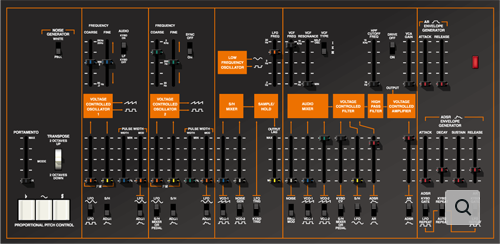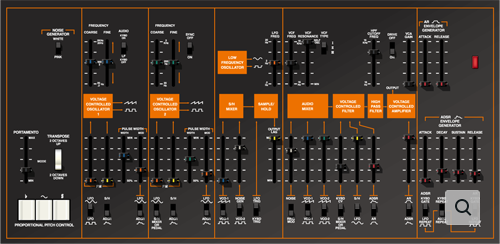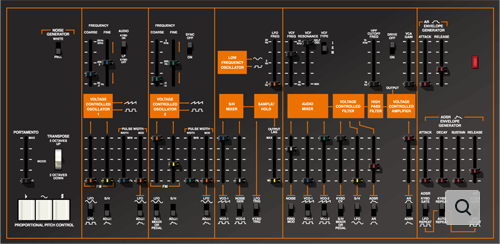Sync Lead
This sound uses oscillator sync, which is one of the distinctive features of the ARP Odyssey. The VCO2 pitch is 1 octave and 4 semitones higher than VCO1 (pressing C will sound an F one octave higher). Since oscillator sync is on, only VCO2 is used in the audio mixer section. The type III filter is used, but the filter is almost completely open. The ADSR settings are fairly percussive, so the filter effect is produced by reducing the VCF cutoff. The ARP Odyssey is designed so that VCO1 is low-note priority and VCO2 is high-note priority. This means that if you're using oscillator sync, and you hold down a low key and then play a high key, the overtone structure of the resulting sound will change dramatically depending on the pitch of the key you play, creating an electronic version of Tuvan “khoomei” overtone singing. It's effective as a gimmick during a live solo—or add plenty of reverb and use it as an unusual drone sound.





 NOISE / CONTROLLERS
NOISE / CONTROLLERS